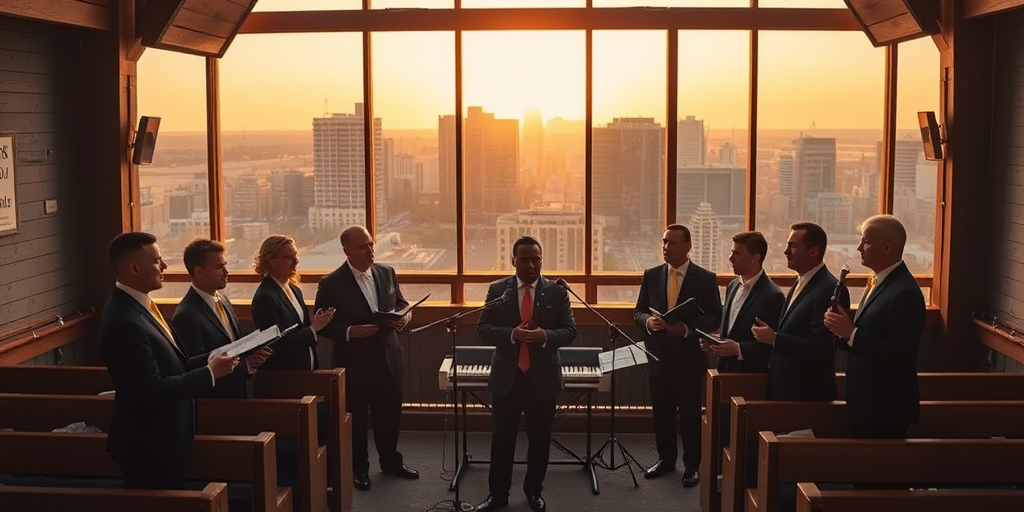Have you ever wondered why gospel quartet music resonates differently in rural churches compared to urban ones? We’re diving into how soulful traditions echo through intimate countryside settings and vibrant city sanctuaries. By exploring historical roots and the transformative impact of community, we reveal how sacred vocal contrast and evolving musical arrangements create unique expressions of faith. Join us as we compare heritage with innovation, inviting you to discover how environment and culture shape the sound and spirit of gospel quartet music.
Musical Arrangements and Performance Styles in Rural vs. Urban Gospel Quartet Music
In rural churches, early gospel quartet music relied on a straightforward instrumental setup that featured tambourines and bass drums, evoking the pastoral chapel harmonies cherished in small congregations. The performances were intimate, focusing on four‐part performance artistry with minimal ornamentation. Historical accounts and personal testimonies recall these settings as venues where simplicity met spiritual fervor, allowing the congregation to connect deeply with traditional sacred sounds.
In contrast, urban gospel quartet music evolved to incorporate a broader palette of instruments, including trombones, saxophones, trumpets, and an array of complex percussion. This progression introduced a contemporary city acoustics vibe, where dynamic ensemble techniques provided a richer and more innovative musical landscape. Urban quartets often embraced energetic hand-clapping and foot-stomping, enhanced by the polished quality of radio broadcasts on stations like WYCB and WHUR, which helped shape a more refined and engaging performance style.
Both rural and urban styles prioritize the emotional conveyance of gospel messages, yet their instrumental choices and performance energies diverge significantly. Rural quartets tend to preserve a traditional, community-centered sound, while urban quartets push for a vibrant, layered arrangement that reflects modern influences. This evolution has been shaped not only by changing musical tastes but also by a blend of historical reverence and contemporary innovation.
- Instrumentation Evolution
- Vocal Arrangement Nuances
- Performance Energy Variations
- Influence of Broadcasting Technology
Acoustic Environments and Worship Venue Effects on Gospel Quartet Music

In rural chapels, natural acoustics define gospel quartet performances. The wooden interiors and open designs yield warm, organic echoes that enhance the natural vibrancy of each hymn. This unrefined sound layering provides intimate worship experiences, where simplicity and heritage resonate clearly with every note.
In urban sanctuaries, modern architectural design shapes a refined performance quality. Iconic venues in Washington, D.C. and bustling neighborhoods incorporate engineered acoustics that highlight sophisticated sound projection. These spaces merge regional music variations with urban sonic innovation, ensuring every vocal nuance is crisp and broadcast-ready for dynamic and contemporary audiences.
Comparing both settings reveals distinct auditory landscapes. Rural churches preserve the purity of natural resonance, while urban facilities deliver polished, technologically enhanced sound. This contrast shapes performance quality and audience engagement, reinforcing the spiritual impact of gospel quartet music in diverse worship environments.
| Church Setting | Acoustic Attributes |
|---|---|
| Rural Churches | Natural resonance, organic sound layering, warm echoes |
| Urban Churches | Engineered acoustics, refined clarity, innovative projection |
This summary emphasizes the pivotal role of venue acoustics in shaping each chorus’s spiritual delivery and overall worship experience, uniting tradition with modern innovation.
Final Words
In the action, we traced the journey from historical roots to evolving musical arrangements, community influences, acoustic environments, and future trends.
We examined how both rural chapels and urban sanctuaries contribute to a dynamic legacy of inspiration and innovative worship.
Our exploration of Gospel Quartet Music in Rural vs. Urban Churches: What’s the Difference? invites us to celebrate the unique narratives woven by tradition and modernity.
Together, we embrace the vibrant legacy ahead with hope and renewed spirit.
FAQ
Q: What is gospel quartet music?
A: Gospel quartet music is a traditional form of Christian vocal harmony featuring four-part arrangements, typically performed by small groups who blend spiritual lyrics with rich harmonies and call-and-response patterns.
Q: Where did gospel music originate?
A: Gospel music originated in African American churches during the late 1800s, evolving from spirituals, work songs, and hymns. The style became prominent during the Great Migration period.
Q: What are the main characteristics of gospel music?
A: Gospel music features powerful vocals, emotional delivery, call-and-response patterns, rhythmic hand clapping, and spiritual lyrics. It often incorporates piano, organ, and dynamic harmonies.
Q: What are the different types of gospel music?
A: The main types include traditional gospel, contemporary gospel, southern gospel, and quartet gospel. Each style has unique characteristics influenced by regional and cultural factors.
Q: How does urban gospel differ from rural gospel?
A: Urban gospel often features more complex arrangements, modern instrumentation, and polished production, while rural gospel maintains traditional elements with simpler arrangements and stronger community focus.
Q: What role do acoustics play in gospel quartet performance?
A: Church acoustics significantly shape quartet performances. Rural churches offer natural resonance for pure vocal harmony, while urban sanctuaries provide engineered sound environments for larger congregations.
Q: How has gospel quartet music evolved over time?
A: Gospel quartet music has evolved from simple a cappella arrangements to incorporate modern instruments, production techniques, and contemporary musical elements while maintaining its spiritual foundation.
